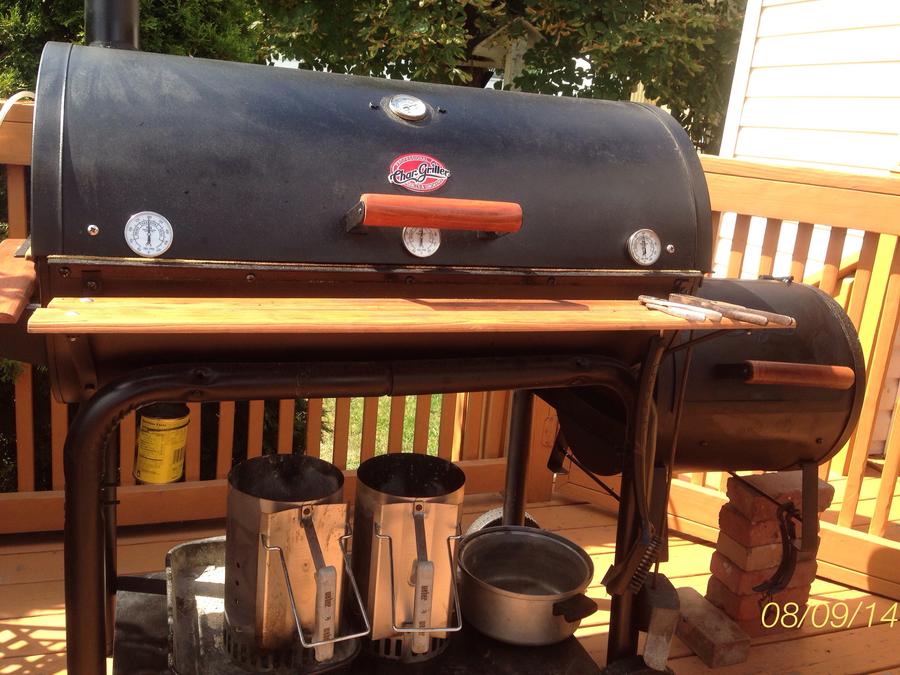- Aug 14, 2014
- 6
- 10
Hello all,
I'm new to the forum so I apologize if this topic has already been covered...
I've been smoking meat religiously for about 5 years with a Brinkmann upright smoker. I've recently switched over to a barrel smoker with an offset fire box. I've always smoked my meats at 225 degrees with great results and felt that I had a good handle on expected cook times. Now that I've started using the barrel smoker I've had to increase cook times quite a bit while cooking at the same temperature. I realize that the upright smoker is more of a direct-type of heat whereas the barrel smoker cooks with indirect heat.
The way I typically build the fire is to start a couple pounds of charcoal in a charcoal chimney and let that get going for about 10 minutes. Then dump it in the fire box, add a few split logs, then just keep adding logs throughout the cook to keep the temp at 225.
My questions are:
Should I check the internal temperature of the smoker with a different thermometer to verify that my thermometer is reading correctly? If so, how?
Should I increase the temperature of the smoker (to 250 degrees) for cooking?
Or should I just expect meats to take longer with this type of smoker?
Any feedback is appreciated.
Thanks in advance,
Matt
I'm new to the forum so I apologize if this topic has already been covered...
I've been smoking meat religiously for about 5 years with a Brinkmann upright smoker. I've recently switched over to a barrel smoker with an offset fire box. I've always smoked my meats at 225 degrees with great results and felt that I had a good handle on expected cook times. Now that I've started using the barrel smoker I've had to increase cook times quite a bit while cooking at the same temperature. I realize that the upright smoker is more of a direct-type of heat whereas the barrel smoker cooks with indirect heat.
The way I typically build the fire is to start a couple pounds of charcoal in a charcoal chimney and let that get going for about 10 minutes. Then dump it in the fire box, add a few split logs, then just keep adding logs throughout the cook to keep the temp at 225.
My questions are:
Should I check the internal temperature of the smoker with a different thermometer to verify that my thermometer is reading correctly? If so, how?
Should I increase the temperature of the smoker (to 250 degrees) for cooking?
Or should I just expect meats to take longer with this type of smoker?
Any feedback is appreciated.
Thanks in advance,
Matt









